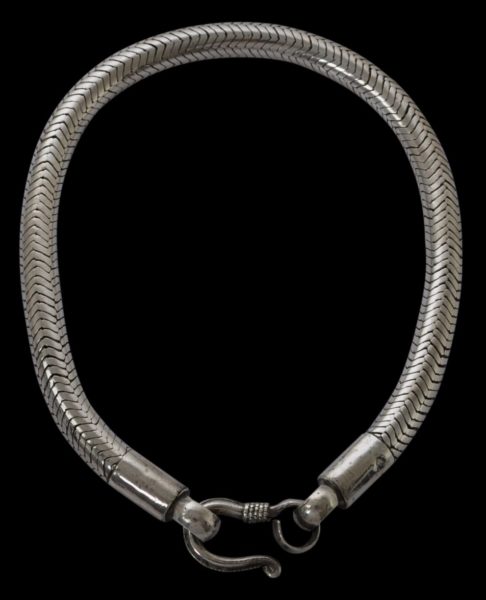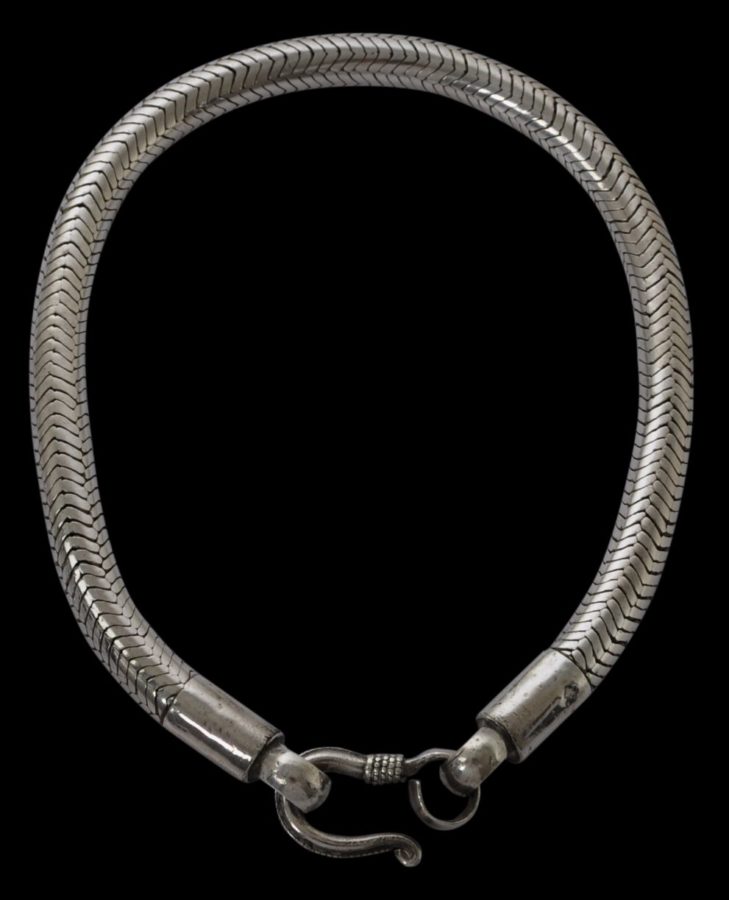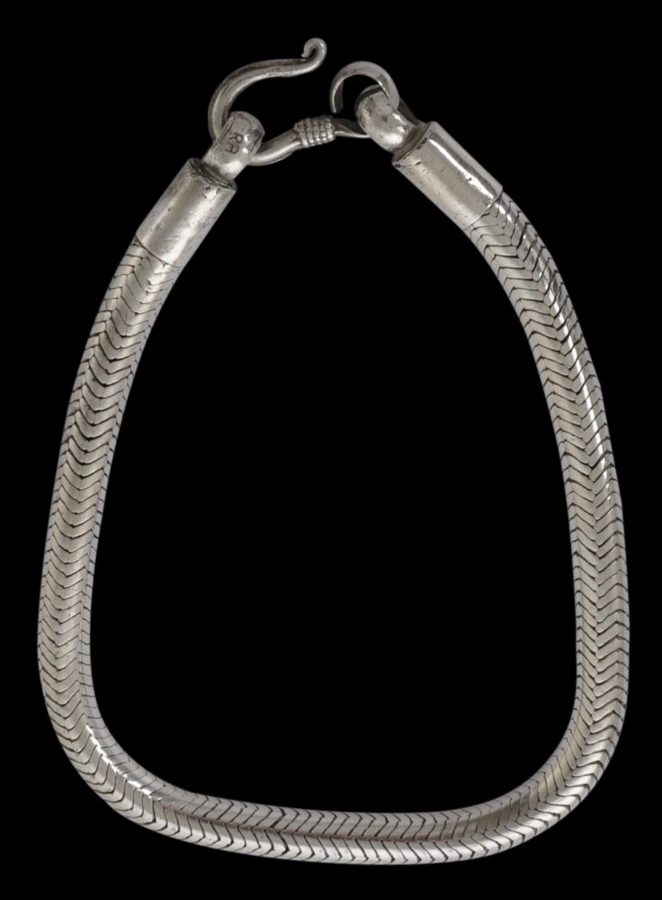This is the thickest and heaviest example of this type of Indian silver necklace that we have seen. It also has superb wear, patina, and flexibility.
It is composed entirely of almost-pure silver and as such is noticeably heavy for its size.
The necklace exhibits is of a type of work known as kamardani. Such necklaces were made by taking silver wire and plaiting it, then it was drawn through drawplates with increasingly smaller apertures to draw and smooth it out. Eventually, the composition no longer has the appearance of plaited wire but more like a chain that looks like interlocking and inseparable vertebrae. With age and wear, the surface becomes even smoother and supple, a process that is aided by the softness and purity of the silver.
The effect of the flexible, loop-in-loop chain is that its movement imitates that of a snake, which has associations in Hinduism with fertility and creation.
The example here has a large hooked, sculptural closure.
Belts or necklaces of similar silver wire work are illustrated in Untracht (1997, p. 242 ) and Leurquin (2004, p. 143).
One end is stamped with the letters ‘RA’ this being either the maker’s mark or perhaps the initials of the owner. Or it might stand for ‘Rajasthan’. Additionally, it has been pointed out that a silversmith and retailer that has operated in India since 1970 called Rathod Arts also used a similar punch mark. Given the obvious age of this piece which is especially clear once it has been handled, it is also possible that the necklace passed through the hands of Rathod Arts and the company added its mark for resale. It was not uncommon for antique items to be pawned with gold and silversmiths across Asia.
Overall, this is a fine, wearable necklace in very good condition. It is an excellent example.
References
Leurquin, A., A World of Belts: Africa, Asia, Oceania, America from the Ghysels Collection, Skira, 2004.
Untracht, O., Traditional Jewelry of India, Thames & Hudson, 1997.





